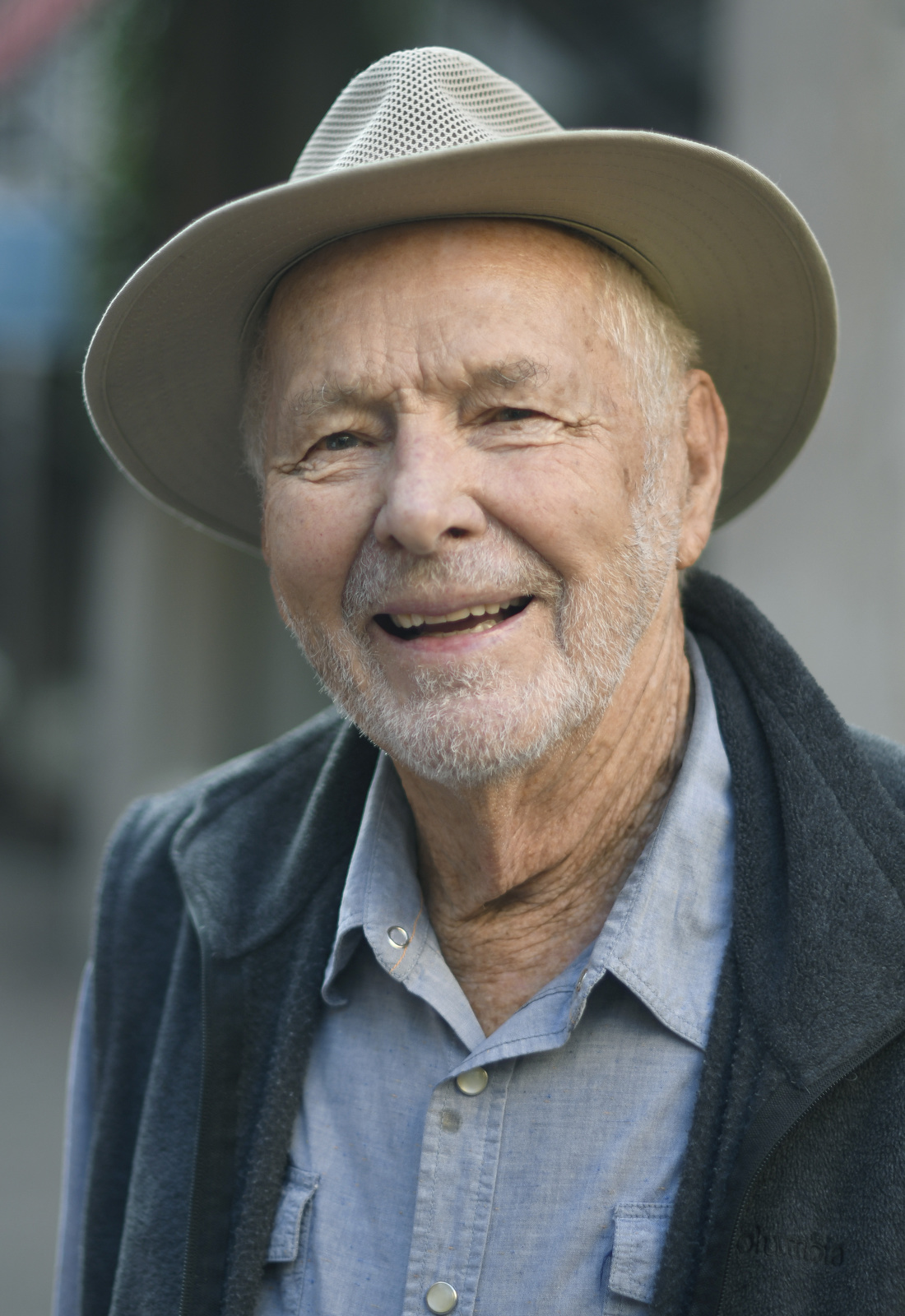Get Oil Out Founder and Dolphin Sculptor Bud Bottoms Dies
He Was a True Man-About-Town and Engaged Public Citizen

Bud Bottoms, the twinkly-eyed activist who came up with the name “Get Oil Out” in response to the Santa Barbara oil spill of 1969, died early this week. He was 90 years old and had been in failing health for several months.
Bottoms embodied to an uncommon degree the ideal of man-about-town and engaged public citizen. He lived not just a full political life, but became a successful sculptor in his later years, creating the triptych of dolphin statues that sits at the base of State Street by Stearns Wharf. Those dolphins, bitterly fought when first unveiled in the early 1980s, have since become common sights in many of Santa Barbara’s sister cities.
Bottoms moved to Santa Barbara in the late 1940s to study art at the Riviera campus of what would become UCSB with his first wife Betty Bottoms, with whom he raised four sons, all of whom became accomplished professional actors. Bottoms worked more than 15 years as a graphic designer and illustrator for GE Tempo, one of the best-known think tanks that sprang up in Santa Barbara during the Cold War.
An avid outdoorsman, Bottoms loved to fish, scuba, hunt, and camp. As such, he reportedly despised the oil platforms as they were erected offshore. When one of Union Oil’s offshore platforms sprang the leak that would become the spill of 1969, Bottoms — a gregarious extrovert — made himself everywhere. “If you needed someone who could express the outrage of the moment, who could draw a clever cartoon, and who was always good with a quote for the media, Bud was the man for the job,” recalled former Santa Barbara Mayor Hal Conklin, then cutting his own political teeth as an environmental organizer.
When protestors were picketing oil operations then taking place on Stearns Wharf, it was Bottoms who came up with the expression “Get Oil Out,” or “GOO” for short. It would become the name of an organization that exists still today. Later Bottoms would lend his illustration skills to various efforts to limit development throughout the South Coast, drawing elaborate, intricate posters depicting a Santa Barbara of unchecked growth. Those drawings — rendered in the spirit of humorous outrage — offer a detailed snapshot of environmental battles long forgotten.
In the early 1970s, Bottoms divorced his wife and quit his job, embarking on what would eventually become an unlikely career as a sculptor. Back in the early 1980s, a Hope ranch resident — the brother of a noted Saudi arms merchant — offered to bankroll a dramatic re-imagination of the bottom of State Street. Four large columns would rise up from every corner of the intersection and a large sculptural art piece would be mounted where the dolphin fountain now stands. In response to a public competition, however, Bottoms suggested a dolphin-themed fountain instead. This proposal was greeted with sniffy dismissal by Santa Barbara’s arts establishment, but enjoyed resounding popular support.
When the matter wound up before the City Council, Bottoms — who had linked his statue to elements of Chumash mythology — packed the chambers with sage burning Chumash elders. The council rolled Bottoms’s way by of a 4-to-3 vote. It was while casting the actual statue that Bottoms would meet his second wife, Carol Ann Bottoms — then a divinity student living in Berkeley — with whom he would live out his days.
In the past 20 years, Bottoms remained actively engaged in his craft. In addition, he authored numerous children’s books on ethics and environmental matters, always with a playful style. No public memorial has been scheduled; a private family service will be held at an unspecified date.


